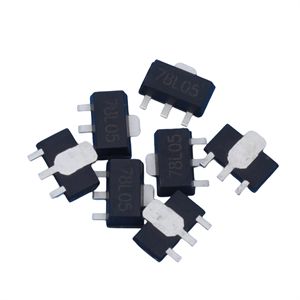Date:2024-09-23 Categories:Product knowledge Hits:450 From: Guangdong Youfeng Microelectronics Co., Ltd(YFW)
The transistor amplifier circuit is one of the most common circuits in modern electronic devices. It is widely used in amplifying voltage, amplifying current, and signal conditioning. Determining the actual parameters of a transistor amplifier circuit is one of the key steps in designing and optimizing circuits. In this article, we will discuss in detail how to determine the actual parameters of a transistor amplification circuit.
Firstly, we need to clarify the basic parameters of the transistor, which is crucial for determining the parameters of the amplification circuit.
1. Input resistance (Rin) and output resistance (Rout): The input resistance of a transistor amplifier circuit refers to the ratio between the input voltage and input current, while the output resistance refers to the ratio between the output voltage and output current. Meanwhile, the input resistance and output resistance also determine the power transmission capability of the circuit. According to the requirements of the circuit, we can determine the input resistance and output resistance by measuring the ratio of current to voltage.
2. Gain (Av): Gain refers to the ratio of the output signal amplitude to the input signal amplitude. It is an important indicator for measuring the amplification capability of a circuit. To determine the gain of a circuit, we can obtain it by measuring the amplitude of the input and output signals and calculating the ratio between them.
3. Frequency response (f): Frequency response refers to the amplification ability of a circuit on an input signal at different frequencies. For transistor amplification circuits, frequency response is crucial as it can provide valuable information in designing and selecting circuit components. To determine the frequency response of a circuit, we can obtain it by measuring the gain of the circuit at different frequencies.
Next, we will discuss in detail how to measure and determine the actual parameters in transistor amplification circuits.
1. Measure input resistance (Rin): To measure input resistance, we need to connect a known resistance to the input terminal of the circuit and calculate the input resistance by measuring the input voltage and input current. Measuring input voltage can be achieved by connecting a voltage source and measuring the voltage at the input terminal of the circuit. Measuring input current can be achieved by connecting a known resistor and measuring the current passing through it.
2. Measure output resistance (Rout): To measure output resistance, we can use a similar method by connecting a known load resistance to the circuit output terminal and measuring the output voltage and output current. By measuring the ratio of output voltage to current, the output resistance can be calculated.
3. Measure gain (Av): In order to measure gain, we need to connect a known input signal source and use an oscilloscope or multimeter to measure the amplitude of the input and output signals. By calculating the ratio of the input signal amplitude to the output signal amplitude, the gain of the amplification circuit can be obtained.
4. Measuring frequency response (f): To measure the frequency response of a circuit, we need to use a spectrum analyzer or signal generator to generate input signals of different frequencies, and use an oscilloscope to measure the corresponding output signals. By measuring the amplitude of the input and output signals of the circuit at different frequencies, the frequency response curve can be plotted.
When determining the actual parameters of a transistor amplification circuit, the following points should also be noted.
1. Maintain circuit stability: When measuring parameters, it is necessary to ensure that the circuit is in a stable state. The stability of the circuit can be maintained by using a stable DC power supply, ensuring the correct connection and placement of circuit components, and other methods.
2. Use appropriate measuring equipment: In order to accurately measure parameters such as voltage, current, and frequency, it is necessary to use appropriate measuring equipment. For example, oscilloscopes can be used to measure signal amplitude and frequency response, while Domit can be used to measure current and voltage, etc.
3. Data analysis and processing: During the measurement process, it is necessary to collect and record the measurement results of different parameters. Then, data analysis tools can be used to process and interpret these measurement data, and calculate the corresponding parameters.

Previous: Classification, Structure, and Principle of MOSFET